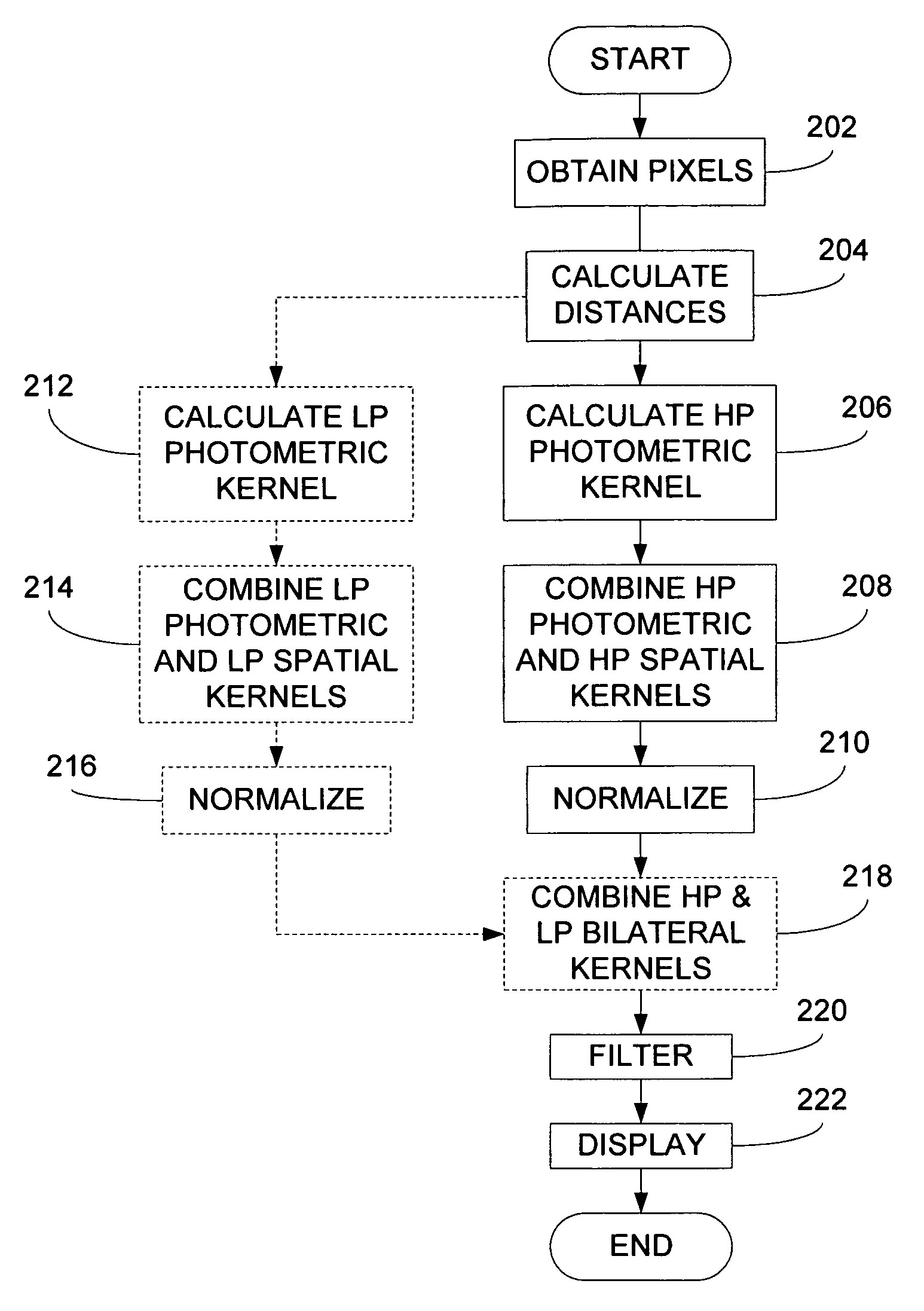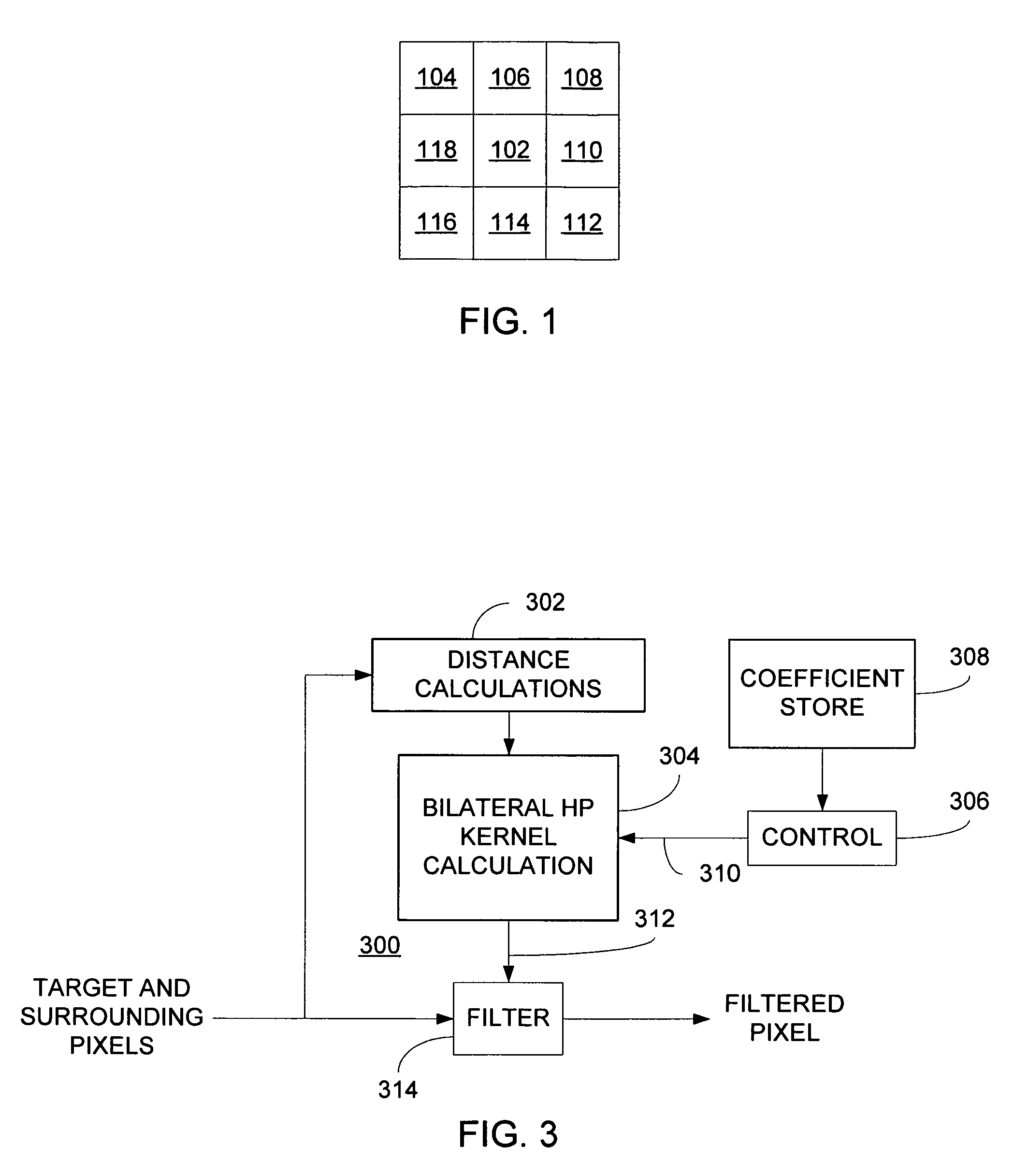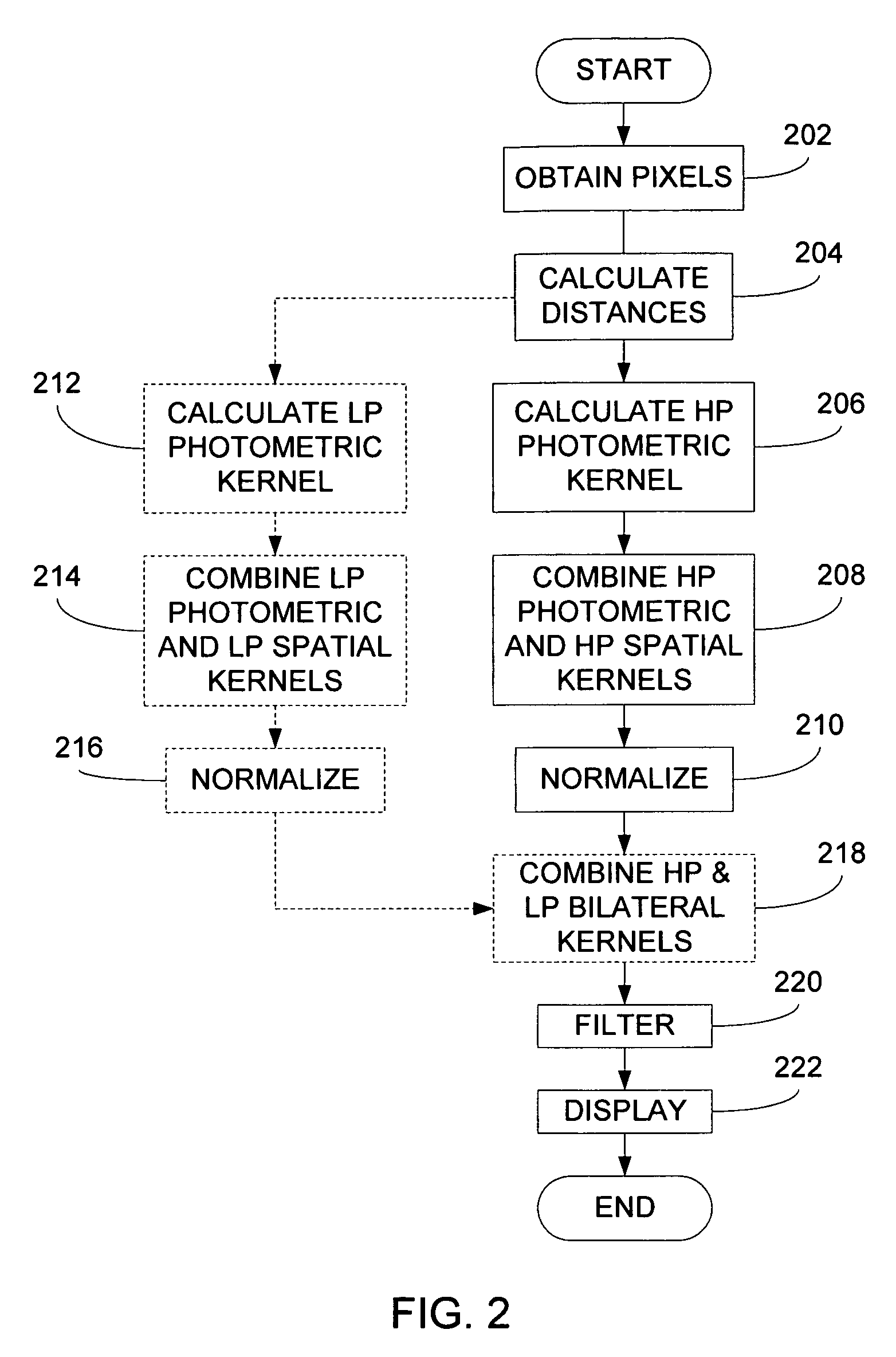Method and apparatus for bilateral high pass filter
a filter and high-pass technology, applied in the field of filtering of digitally represented images, can solve the problems of slow spatial variation, degraded image quality, and increased noise level of captured images, no matter how small
- Summary
- Abstract
- Description
- Claims
- Application Information
AI Technical Summary
Benefits of technology
Problems solved by technology
Method used
Image
Examples
Embodiment Construction
[0014]Briefly, an embodiment of the present invention provides a method for filtering at least one pixel of an image using a bilateral high pass filter and, optionally, a bilateral low pass filter. In particular, a target pixel and surrounding pixels corresponding to the target pixel are obtained from a digitally represented image. A bilateral high pass filtering kernel is determined based at least in part upon the target pixel and the surrounding pixels. According to one aspect of the present invention, distances, such as Euclidean distances, between the target pixel and at least some of the surrounding pixels are determined and used to calculate the bilateral high pass filtering kernel. Furthermore, in accordance with a presently preferred embodiment, a thresholding operation is performed on each of the Euclidean distances. Only those Euclidean distances comparing favorably with the threshold value give rise to a non-zero coefficient value. Thereafter, the coefficients determined ...
PUM
 Login to View More
Login to View More Abstract
Description
Claims
Application Information
 Login to View More
Login to View More - R&D
- Intellectual Property
- Life Sciences
- Materials
- Tech Scout
- Unparalleled Data Quality
- Higher Quality Content
- 60% Fewer Hallucinations
Browse by: Latest US Patents, China's latest patents, Technical Efficacy Thesaurus, Application Domain, Technology Topic, Popular Technical Reports.
© 2025 PatSnap. All rights reserved.Legal|Privacy policy|Modern Slavery Act Transparency Statement|Sitemap|About US| Contact US: help@patsnap.com



